#Machine Learning as a Service
Explore tagged Tumblr posts
Photo

What is an Algorithm in 30 Seconds?
An algorithm is simply a series of instructions.
Think of a recipe: boil water, add pasta, wait, drain, eat. These are steps to follow.
In computer terms, an algorithm is a set of instructions for a computer to execute.
In machine learning, these instructions enable computers to learn from data, making machine learning algorithms unique and powerful.
#artificial intelligence#automation#machine learning#business#digital marketing#professional services#marketing#web design#web development#social media#tech#Technology
69 notes
·
View notes
Text
I'm makin' band sew-on patches with an embroidery digitizing software. And gettin' squirrely with the fabric i'm picking as the background. Also ran out of black thread so ended up with a summer-vibe patch using dark teal thread on an almost sun-print batik fabric.
Band is Indeyevid from NJ, if you're lookin for some punk garage band jams. They recently made a music video for their song Red Dye 40.



Lessons learned on embroidery n patches:
1) (and this is so silly fundamental it's almost not worth saying,) but when you hoop stabilizer or your fabric, dear gods make sure the piece is larger than your hoop by at least an inch on all sides. 🥲 i had to crossways my washable stabilizer and effectively use twice as much for the patches i did make because i got a tube that was too narrow for my hoop.
2) thiicccc boarders on your patch make it easier to hide the raw edge that gets covered by the satin stitch boarder. 0.18" for this size patch, up to 0.25" on really big patches.
3) duh to me, use the preview stitch feature of the program to make sure you dont accidentally hit outline on a design part you didnt want outlined. ...And then make a patch that looks so misaligned that it doesnt pass your personal preference.
4) basic quilt cotton, - quite a flimsy choice for patches, needs heavy tear away stabilizer for support to make it hearty. In future, look for twill, or canvas for patch base (save on needing to layer materials).
#patches#machine embroidery#embroidery digitizing services#embroidery digitizer software#asharpartmaille#quilt fabric#nj punk bands#punk rock#garage band#made it myself#sew on patch#lessons learned#indeyevid#indeyevid band#bruh i used soo much stabilizer for this. if i am asked to make more i gotta order a bolt or something jfc#Spotify
3 notes
·
View notes
Text
Boost Your Brand’s Voice with Our AI Content Generator Solution
Atcuality offers a next-gen content automation platform that helps your brand speak with clarity, consistency, and creativity. Whether you’re a startup or an enterprise, content is key to growth, and managing it shouldn’t be overwhelming. At the center of our offering is a smart AI content generator that creates high-quality text tailored to your audience, industry, and goals. From social captions and ad creatives to long-form blog posts, our platform adapts to your needs and helps reduce time-to-publish dramatically. We also provide collaboration tools, workflow automation, and data insights to refine your strategy over time. Elevate your brand’s voice and reduce content fatigue with the intelligence and reliability only Atcuality can offer.
#seo marketing#seo services#artificial intelligence#digital marketing#seo agency#seo company#iot applications#ai powered application#azure cloud services#amazon web services#ai model#ai art#ai generated#ai image#ai#chatgpt#technology#machine learning#llm#ai services#ai seo#augmented reality agency#augmented reality#augmented and virtual reality market#augmented intelligence#virtual reality#virtual assistant
2 notes
·
View notes
Text
SO exhausting that so many writing software companies are using ai to generate stories
If anyone else was on Reedsy... just a heads up this is the direction they've gone in...

#spooky rambles#reedsy#i'm sure they grifted off of everyone who used their software#it's just so exhausting#“machine learning” yeah and WHO did it learn from?#would LOVE to know that#they have in their terms of service they “aren't” training it on User Content#but I just don't trust like that anymore#they may not be the ones grifting it but if they use the software by companies that ARE participating in that#then it's pointless to even claim that#what's the difference of not taking from an author before it's published if it's considered ok AFTER publication?#a thief is still a thief
2 notes
·
View notes
Text
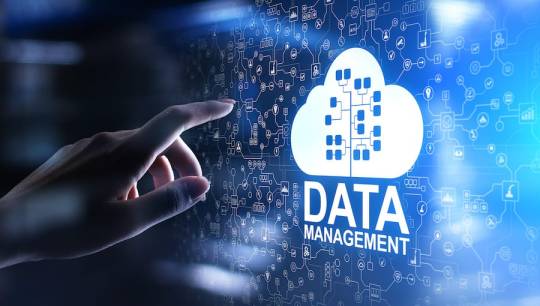
The Comprehensive Guide to Web Development, Data Management, and More
Introduction
Everything today is technology driven in this digital world. There's a lot happening behind the scenes when you use your favorite apps, go to websites, and do other things with all of those zeroes and ones — or binary data. In this blog, I will be explaining what all these terminologies really means and other basics of web development, data management etc. We will be discussing them in the simplest way so that this becomes easy to understand for beginners or people who are even remotely interested about technology. JOIN US
What is Web Development?
Web development refers to the work and process of developing a website or web application that can run in a web browser. From laying out individual web page designs before we ever start coding, to how the layout will be implemented through HTML/CSS. There are two major fields of web development — front-end and back-end.
Front-End Development
Front-end development, also known as client-side development, is the part of web development that deals with what users see and interact with on their screens. It involves using languages like HTML, CSS, and JavaScript to create the visual elements of a website, such as buttons, forms, and images. JOIN US
HTML (HyperText Markup Language):
HTML is the foundation of all website, it helps one to organize their content on web platform. It provides the default style to basic elements such as headings, paragraphs and links.
CSS (Cascading Style Sheets):
styles and formats HTML elements. It makes an attractive and user-friendly look of webpage as it controls the colors, fonts, layout.
JavaScript :
A language for adding interactivity to a website Users interact with items, like clicking a button to send in a form or viewing images within the slideshow. JOIN US
Back-End Development
The difference while front-end development is all about what the user sees, back end involves everything that happens behind. The back-end consists of a server, database and application logic that runs on the web.
Server:
A server is a computer that holds website files and provides them to the user browser when they request it. Server-Side: These are populated by back-end developers who build and maintain servers using languages like Python, PHP or Ruby.
Database:
The place where a website keeps its data, from user details to content and settings The database is maintained with services like MySQL, PostgreSQL, or MongoDB. JOIN US
Application Logic —
the code that links front-end and back-end It takes user input, gets data from the database and returns right informations to front-end area.
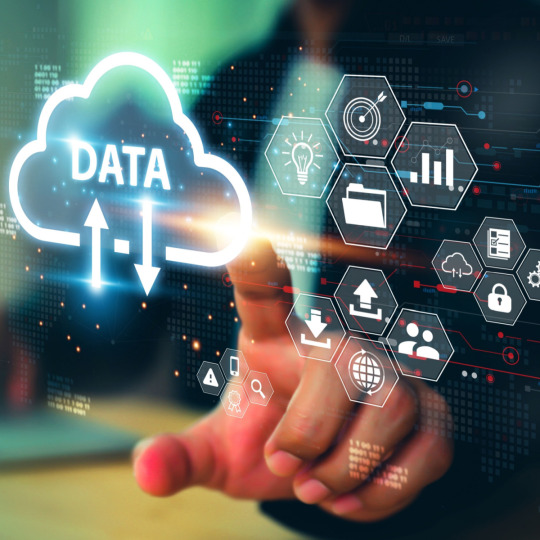
Why Proper Data Management is Absolutely Critical
Data management — Besides web development this is the most important a part of our Digital World. What Is Data Management? It includes practices, policies and procedures that are used to collect store secure data in controlled way.
Data Storage –
data after being collected needs to be stored securely such data can be stored in relational databases or cloud storage solutions. The most important aspect here is that the data should never be accessed by an unauthorized source or breached. JOIN US
Data processing:
Right from storing the data, with Big Data you further move on to process it in order to make sense out of hordes of raw information. This includes cleansing the data (removing errors or redundancies), finding patterns among it, and producing ideas that could be useful for decision-making.
Data Security:
Another important part of data management is the security of it. It refers to defending data against unauthorized access, breaches or other potential vulnerabilities. You can do this with some basic security methods, mostly encryption and access controls as well as regular auditing of your systems.
Other Critical Tech Landmarks
There are a lot of disciplines in the tech world that go beyond web development and data management. Here are a few of them:
Cloud Computing
Leading by example, AWS had established cloud computing as the on-demand delivery of IT resources and applications via web services/Internet over a decade considering all layers to make it easy from servers up to top most layer. This will enable organizations to consume technology resources in the form of pay-as-you-go model without having to purchase, own and feed that infrastructure. JOIN US
Cloud Computing Advantages:
Main advantages are cost savings, scalability, flexibility and disaster recovery. Resources can be scaled based on usage, which means companies only pay for what they are using and have the data backed up in case of an emergency.
Examples of Cloud Services:
Few popular cloud services are Amazon Web Services (AWS), Microsoft Azure, and Google Cloud. These provide a plethora of services that helps to Develop and Manage App, Store Data etc.
Cybersecurity
As the world continues to rely more heavily on digital technologies, cybersecurity has never been a bigger issue. Protecting computer systems, networks and data from cyber attacks is called Cyber security.
Phishing attacks, Malware, Ransomware and Data breaches:
This is common cybersecurity threats. These threats can bear substantial ramifications, from financial damages to reputation harm for any corporation.
Cybersecurity Best Practices:
In order to safeguard against cybersecurity threats, it is necessary to follow best-practices including using strong passwords and two-factor authorization, updating software as required, training employees on security risks.
Artificial Intelligence and Machine Learning
Artificial Intelligence (AI) and Machine Learning (ML) represent the fastest-growing fields of creating systems that learn from data, identifying patterns in them. These are applied to several use-cases like self driving cars, personalization in Netflix.
AI vs ML —
AI is the broader concept of machines being able to carry out tasks in a way we would consider “smart”. Machine learning is a type of Artificial Intelligence (AI) that provides computers with the ability to learn without being explicitly programmed. JOIN US
Applications of Artificial Intelligence and Machine Learning: some common applications include Image recognition, Speech to text, Natural language processing, Predictive analytics Robotics.
Web Development meets Data Management etc.
We need so many things like web development, data management and cloud computing plus cybersecurity etc.. but some of them are most important aspects i.e. AI/ML yet more fascinating is where these fields converge or play off each other.
Web Development and Data Management
Web Development and Data Management goes hand in hand. The large number of websites and web-based applications in the world generate enormous amounts of data — from user interactions, to transaction records. Being able to manage this data is key in providing a fantastic user experience and enabling you to make decisions based on the right kind of information.
E.g. E-commerce Website, products data need to be saved on server also customers data should save in a database loosely coupled with orders and payments. This data is necessary for customization of the shopping experience as well as inventory management and fraud prevention.
Cloud Computing and Web Development
The development of the web has been revolutionized by cloud computing which gives developers a way to allocate, deploy and scale applications more or less without service friction. Developers now can host applications and data in cloud services instead of investing for physical servers.
E.g. A start-up company can use cloud services to roll out the web application globally in order for all users worldwide could browse it without waiting due unavailability of geolocation prohibited access.
The Future of Cybersecurity and Data Management
Which makes Cybersecurity a very important part of the Data management. The more data collected and stored by an organization, the greater a target it becomes for cyber threats. It is important to secure this data using robust cybersecurity measures, so that sensitive information remains intact and customer trust does not weaken. JOIN US
Ex: A healthcare provider would have to protect patient data in order to be compliant with regulations such as HIPAA (Health Insurance Portability and Accountability Act) that is also responsible for ensuring a degree of confidentiality between a provider and their patients.
Conclusion
Well, in a nutshell web-developer or Data manager etc are some of the integral parts for digital world.
As a Business Owner, Tech Enthusiast or even if you are just planning to make your Career in tech — it is important that you understand these. With the progress of technology never slowing down, these intersections are perhaps only going to come together more strongly and develop into cornerstones that define how we live in a digital world tomorrow.
With the fundamental knowledge of web development, data management, automation and ML you will manage to catch up with digital movements. Whether you have a site to build, ideas data to manage or simply interested in what’s hot these days, skills and knowledge around the above will stand good for changing tech world. JOIN US
#Technology#Web Development#Front-End Development#Back-End Development#HTML#CSS#JavaScript#Data Management#Data Security#Cloud Computing#AWS (Amazon Web Services)#Cybersecurity#Artificial Intelligence (AI)#Machine Learning (ML)#Digital World#Tech Trends#IT Basics#Beginners Guide#Web Development Basics#Tech Enthusiast#Tech Career#america
4 notes
·
View notes
Text
Why Quantum Computing Will Change the Tech Landscape
The technology industry has seen significant advancements over the past few decades, but nothing quite as transformative as quantum computing promises to be. Why Quantum Computing Will Change the Tech Landscape is not just a matter of speculation; it’s grounded in the science of how we compute and the immense potential of quantum mechanics to revolutionise various sectors. As traditional…
#AI#AI acceleration#AI development#autonomous vehicles#big data#classical computing#climate modelling#complex systems#computational power#computing power#cryptography#cybersecurity#data processing#data simulation#drug discovery#economic impact#emerging tech#energy efficiency#exponential computing#exponential growth#fast problem solving#financial services#Future Technology#government funding#hardware#Healthcare#industry applications#industry transformation#innovation#machine learning
3 notes
·
View notes
Text

2 notes
·
View notes
Text
Optimizing Business Operations with Advanced Machine Learning Services
Machine learning has gained popularity in recent years thanks to the adoption of the technology. On the other hand, traditional machine learning necessitates managing data pipelines, robust server maintenance, and the creation of a model for machine learning from scratch, among other technical infrastructure management tasks. Many of these processes are automated by machine learning service which enables businesses to use a platform much more quickly.
What do you understand of Machine learning?
Deep learning and neural networks applied to data are examples of machine learning, a branch of artificial intelligence focused on data-driven learning. It begins with a dataset and gains the ability to extract relevant data from it.
Machine learning technologies facilitate computer vision, speech recognition, face identification, predictive analytics, and more. They also make regression more accurate.
For what purpose is it used?
Many use cases, such as churn avoidance and support ticket categorization make use of MLaaS. The vital thing about MLaaS is it makes it possible to delegate machine learning's laborious tasks. This implies that you won't need to install software, configure servers, maintain infrastructure, and other related tasks. All you have to do is choose the column to be predicted, connect the pertinent training data, and let the software do its magic.
Natural Language Interpretation
By examining social media postings and the tone of consumer reviews, natural language processing aids businesses in better understanding their clientele. the ml services enable them to make more informed choices about selling their goods and services, including providing automated help or highlighting superior substitutes. Machine learning can categorize incoming customer inquiries into distinct groups, enabling businesses to allocate their resources and time.
Predicting
Another use of machine learning is forecasting, which allows businesses to project future occurrences based on existing data. For example, businesses that need to estimate the costs of their goods, services, or clients might utilize MLaaS for cost modelling.
Data Investigation
Investigating variables, examining correlations between variables, and displaying associations are all part of data exploration. Businesses may generate informed suggestions and contextualize vital data using machine learning.
Data Inconsistency
Another crucial component of machine learning is anomaly detection, which finds anomalous occurrences like fraud. This technology is especially helpful for businesses that lack the means or know-how to create their own systems for identifying anomalies.
Examining And Comprehending Datasets
Machine learning provides an alternative to manual dataset searching and comprehension by converting text searches into SQL queries using algorithms trained on millions of samples. Regression analysis use to determine the correlations between variables, such as those affecting sales and customer satisfaction from various product attributes or advertising channels.
Recognition Of Images
One area of machine learning that is very useful for mobile apps, security, and healthcare is image recognition. Businesses utilize recommendation engines to promote music or goods to consumers. While some companies have used picture recognition to create lucrative mobile applications.
Your understanding of AI will drastically shift. They used to believe that AI was only beyond the financial reach of large corporations. However, thanks to services anyone may now use this technology.
2 notes
·
View notes
Text
Getting Machine Learning Accessible to Everyone: Breaking the Complexity Barrier
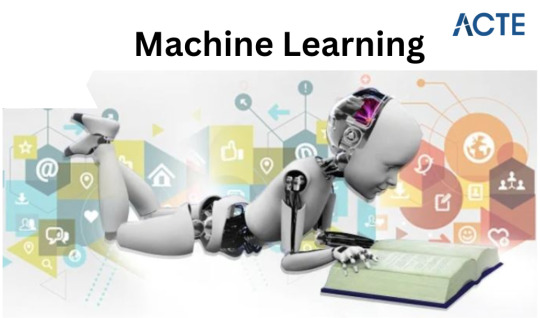
Machine learning has become an essential part of our daily lives, influencing how we interact with technology and impacting various industries. But, what exactly is machine learning? In simple terms, it's a subset of artificial intelligence (AI) that focuses on teaching computers to learn from data and make decisions without explicit programming. Now, let's delve deeper into this fascinating realm, exploring its core components, advantages, and real-world applications.
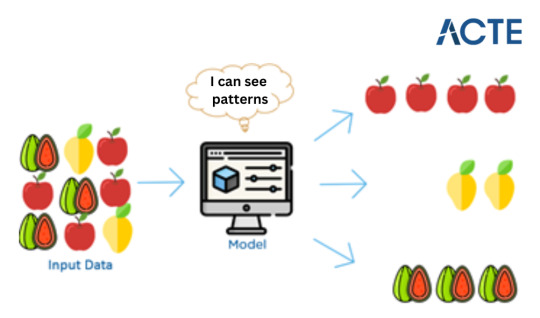
Imagine teaching a computer to differentiate between fruits like apples and oranges. Instead of handing it a list of rules, you provide it with numerous pictures of these fruits. The computer then seeks patterns in these images - perhaps noticing that apples are round and come in red or green hues, while oranges are round and orange in colour. After encountering many examples, the computer grasps the ability to distinguish between apples and oranges on its own. So, when shown a new fruit picture, it can decide whether it's an apple or an orange based on its learning. This is the essence of machine learning: computers learn from data and apply that learning to make decisions.
Key Concepts in Machine Learning
Algorithms: At the heart of machine learning are algorithms, mathematical models crafted to process data and provide insights or predictions. These algorithms fall into categories like supervised learning, unsupervised learning, and reinforcement learning, each serving distinct purposes.
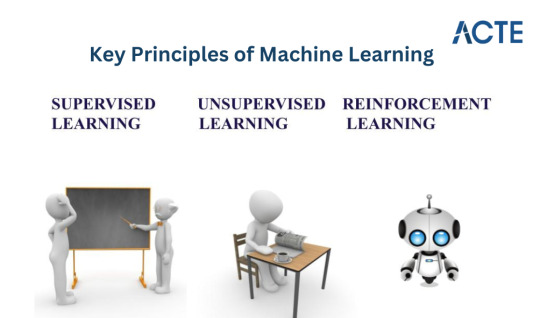
Supervised Learning: This type of algorithm learns from labelled data, where inputs are matched with corresponding outputs. It learns the mapping between inputs and desired outputs, enabling accurate predictions on unseen data.
Unsupervised Learning: In contrast, unsupervised learning involves unlabelled data. This algorithm uncovers hidden patterns or relationships within the data, often revealing insights that weren't initially apparent.
Reinforcement Learning: This algorithm focuses on training agents to make sequential decisions by receiving rewards or penalties from the environment. It excels in complex scenarios such as autonomous driving or gaming.
Training and Testing Data: Training a machine learning model requires a substantial amount of data, divided into training and testing sets. The training data teaches the model patterns, while the testing data evaluates its performance and accuracy.
Feature Extraction and Engineering: Machine learning relies on features, specific attributes of data, to make predictions. Feature extraction involves selecting relevant features, while feature engineering creates new features to enhance model performance.
Benefits of Machine Learning
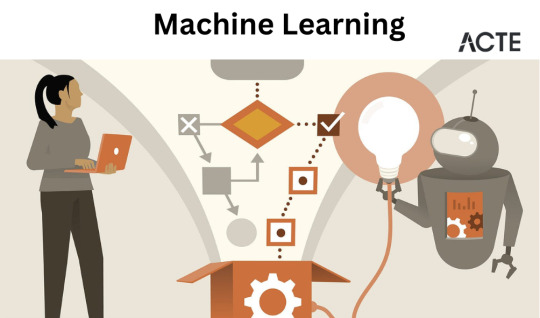
Machine learning brings numerous benefits that contribute to its widespread adoption:
Automation and Efficiency: By automating repetitive tasks and decision-making processes, machine learning boosts efficiency, allowing resources to be allocated strategically.
Accurate Predictions and Insights: Machine learning models analyse vast data sets to uncover patterns and make predictions, empowering businesses with informed decision-making.
Adaptability and Scalability: Machine learning models improve with more data, providing better results over time. They can scale to handle large datasets and complex problems.
Personalization and Customization: Machine learning enables personalized user experiences by analysing preferences and behaviour, fostering customer satisfaction.
Real-World Applications of Machine Learning
Machine learning is transforming various industries, driving innovation:
Healthcare: Machine learning aids in medical image analysis, disease diagnosis, drug discovery, and personalized medicine. It enhances patient outcomes and streamlines healthcare processes.
Finance: In finance, machine learning enhances fraud detection, credit scoring, and risk analysis. It supports data-driven decisions and optimization.
Retail and E-commerce: Machine learning powers recommendations, demand forecasting, and customer behaviour analysis, optimizing sales and enhancing customer experiences.
Transportation: Machine learning contributes to traffic prediction, autonomous vehicles, and supply chain optimization, improving efficiency and safety.
Incorporating machine learning into industries has transformed them. If you're interested in integrating machine learning into your business or learning more, consider expert guidance or specialized training, like that offered by ACTE institute. As technology advances, machine learning will continue shaping our future in unimaginable ways. Get ready to embrace its potential and transformative capabilities.
#machine learning ai#learn machine learning#machine learning#machine learning development company#technology#machine learning services
8 notes
·
View notes
Photo

The Frame Problem: AI's Unseen Nemesis
The frame problem is AI's Achilles' heel, lurking since the 1960s and still unresolved.
1. The Robot Dilemma
Daniel Dennett's thought experiment illustrates the issue: a robot must save its battery from a room with a bomb.
Initially, the robot pulls the battery on a cart but also drags the bomb out, unaware of this side effect.
Solution attempts include programming awareness of side effects, leading to analysis paralysis as the robot debates endless possibilities.
2. The Side Effect Spiral
When programmed to consider all side effects, the robot wastes time on irrelevant details—like pondering wall color changes.
This shows how difficult it is for AI to filter relevant from irrelevant information without getting bogged down.
3. Human Intuition vs. AI Logic
Humans effortlessly ignore irrelevant details, making quick decisions in complex contexts.
Programming AI to mimic this selective ignorance is resource-intensive and remains a significant challenge.
The frame problem underscores a subtle yet crucial aspect of human intelligence: our ability to instantly prioritize relevant information. As we advance in AI development, solving this problem will be key to creating truly intelligent systems.
Got thoughts on tackling the frame problem? Share your ideas!
#artificial intelligence#automation#machine learning#business#digital marketing#professional services#marketing#web design#web development#social media#tech#Technology
21 notes
·
View notes
Text
How AI is Changing Traditional Search Engine Optimization(SEO)to adavance ?
2 notes
·
View notes
Text
https://www.sharepresentation.com/megatask01/influence-machine-learning-google-ads
Machine learning has revolutionized numerous industries, and advertising is no exception. With Google Ads being one of the most powerful advertising platforms, machine learning has taken over the realm of campaign management. In this article, we will explore five incredible ways machine learning is transforming Google Ads campaign management, enabling businesses to reach their target audience more effectively and maximize their advertising efforts.
3 notes
·
View notes
Text
The Impact Of Machine Learning On SEO

Machine learning has transformed SEO by enabling better data analysis, personalized search results, and improved content recommendations. Algorithms like Google's RankBrain use ML to understand user intent, influencing search rankings. SEO company in Chandigarh can harness machine learning to enhance keyword research, content optimization, and user experience, ensuring businesses stay competitive in the evolving digital landscape and achieve higher search engine visibility.
3 notes
·
View notes
Text
What is a Data pipeline for Machine Learning?
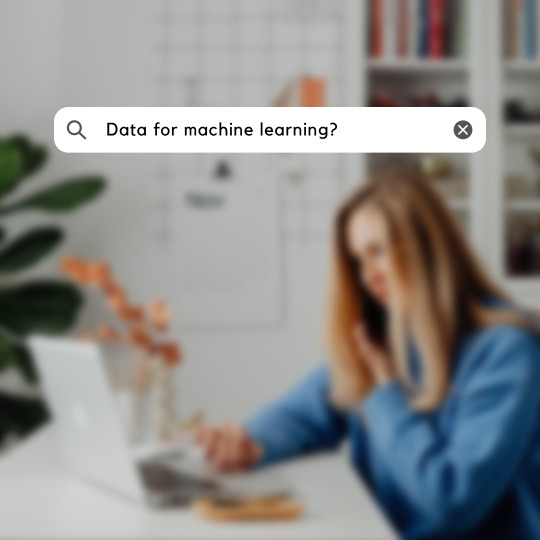
As machine learning technologies continue to advance, the need for high-quality data has become increasingly important. Data is the lifeblood of computer vision applications, as it provides the foundation for machine learning algorithms to learn and recognize patterns within images or video. Without high-quality data, computer vision models will not be able to effectively identify objects, recognize faces, or accurately track movements.
Machine learning algorithms require large amounts of data to learn and identify patterns, and this is especially true for computer vision, which deals with visual data. By providing annotated data that identifies objects within images and provides context around them, machine learning algorithms can more accurately detect and identify similar objects within new images.
Moreover, data is also essential in validating computer vision models. Once a model has been trained, it is important to test its accuracy and performance on new data. This requires additional labeled data to evaluate the model's performance. Without this validation data, it is impossible to accurately determine the effectiveness of the model.
Data Requirement at multiple ML stage
Data is required at various stages in the development of computer vision systems.
Here are some key stages where data is required:
Training: In the training phase, a large amount of labeled data is required to teach the machine learning algorithm to recognize patterns and make accurate predictions. The labeled data is used to train the algorithm to identify objects, faces, gestures, and other features in images or videos.
Validation: Once the algorithm has been trained, it is essential to validate its performance on a separate set of labeled data. This helps to ensure that the algorithm has learned the appropriate features and can generalize well to new data.
Testing: Testing is typically done on real-world data to assess the performance of the model in the field. This helps to identify any limitations or areas for improvement in the model and the data it was trained on.
Re-training: After testing, the model may need to be re-trained with additional data or re-labeled data to address any issues or limitations discovered in the testing phase.
In addition to these key stages, data is also required for ongoing model maintenance and improvement. As new data becomes available, it can be used to refine and improve the performance of the model over time.
Types of Data used in ML model preparation
The team has to work on various types of data at each stage of model development.
Streamline, structured, and unstructured data are all important when creating computer vision models, as they can each provide valuable insights and information that can be used to train the model.
Streamline data refers to data that is captured in real-time or near real-time from a single source. This can include data from sensors, cameras, or other monitoring devices that capture information about a particular environment or process.
Structured data, on the other hand, refers to data that is organized in a specific format, such as a database or spreadsheet. This type of data can be easier to work with and analyze, as it is already formatted in a way that can be easily understood by the computer.
Unstructured data includes any type of data that is not organized in a specific way, such as text, images, or video. This type of data can be more difficult to work with, but it can also provide valuable insights that may not be captured by structured data alone.
When creating a computer vision model, it is important to consider all three types of data in order to get a complete picture of the environment or process being analyzed. This can involve using a combination of sensors and cameras to capture streamline data, organizing structured data in a database or spreadsheet, and using machine learning algorithms to analyze and make sense of unstructured data such as images or text. By leveraging all three types of data, it is possible to create a more robust and accurate computer vision model.
Data Pipeline for machine learning
The data pipeline for machine learning involves a series of steps, starting from collecting raw data to deploying the final model. Each step is critical in ensuring the model is trained on high-quality data and performs well on new inputs in the real world.
Below is the description of the steps involved in a typical data pipeline for machine learning and computer vision:
Data Collection: The first step is to collect raw data in the form of images or videos. This can be done through various sources such as publicly available datasets, web scraping, or data acquisition from hardware devices.
Data Cleaning: The collected data often contains noise, missing values, or inconsistencies that can negatively affect the performance of the model. Hence, data cleaning is performed to remove any such issues and ensure the data is ready for annotation.
Data Annotation: In this step, experts annotate the images with labels to make it easier for the model to learn from the data. Data annotation can be in the form of bounding boxes, polygons, or pixel-level segmentation masks.
Data Augmentation: To increase the diversity of the data and prevent overfitting, data augmentation techniques are applied to the annotated data. These techniques include random cropping, flipping, rotation, and color jittering.
Data Splitting: The annotated data is split into training, validation, and testing sets. The training set is used to train the model, the validation set is used to tune the hyperparameters and prevent overfitting, and the testing set is used to evaluate the final performance of the model.
Model Training: The next step is to train the computer vision model using the annotated and augmented data. This involves selecting an appropriate architecture, loss function, and optimization algorithm, and tuning the hyperparameters to achieve the best performance.
Model Evaluation: Once the model is trained, it is evaluated on the testing set to measure its performance. Metrics such as accuracy, precision, recall, and score are computed to assess the model's performance.
Model Deployment: The final step is to deploy the model in the production environment, where it can be used to solve real-world computer vision problems. This involves integrating the model into the target system and ensuring it can handle new inputs and operate in real time.
TagX Data as a Service
Data as a service (DaaS) refers to the provision of data by a company to other companies. TagX provides DaaS to AI companies by collecting, preparing, and annotating data that can be used to train and test AI models.
Here’s a more detailed explanation of how TagX provides DaaS to AI companies:
Data Collection: TagX collects a wide range of data from various sources such as public data sets, proprietary data, and third-party providers. This data includes image, video, text, and audio data that can be used to train AI models for various use cases.
Data Preparation: Once the data is collected, TagX prepares the data for use in AI models by cleaning, normalizing, and formatting the data. This ensures that the data is in a format that can be easily used by AI models.
Data Annotation: TagX uses a team of annotators to label and tag the data, identifying specific attributes and features that will be used by the AI models. This includes image annotation, video annotation, text annotation, and audio annotation. This step is crucial for the training of AI models, as the models learn from the labeled data.
Data Governance: TagX ensures that the data is properly managed and governed, including data privacy and security. We follow data governance best practices and regulations to ensure that the data provided is trustworthy and compliant with regulations.
Data Monitoring: TagX continuously monitors the data and updates it as needed to ensure that it is relevant and up-to-date. This helps to ensure that the AI models trained using our data are accurate and reliable.
By providing data as a service, TagX makes it easy for AI companies to access high-quality, relevant data that can be used to train and test AI models. This helps AI companies to improve the speed, quality, and reliability of their models, and reduce the time and cost of developing AI systems. Additionally, by providing data that is properly annotated and managed, the AI models developed can be exp
2 notes
·
View notes
Text

SEO Internationalization and localization - TEXVN
3 notes
·
View notes